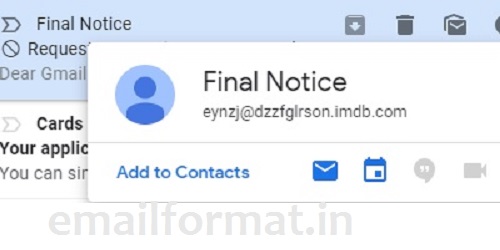Understand the Purpose of a Resignation Letter
A resignation letter is a formal document that informs your employer of your intention to leave your current position. Its purpose is to provide clarity, maintain professionalism, and ensure a smooth transition. It serves as an official record of your departure date and reasons for leaving, if you choose to include them. Writing a clear and respectful resignation letter helps preserve professional relationships, which can be valuable for references in the future. It also sets a positive tone for your departure, showing that you value your time with the company and wish to leave on good terms.
Keep Your Tone Professional and Polite
While leaving a job can be emotional, it’s important to keep your resignation letter professional and polite. Avoid negative comments or criticism about the company, your boss, or colleagues. Even if you had challenges in the role, focus on expressing gratitude for the opportunity and experiences you gained. A professional tone ensures you leave with dignity and keeps the door open for future networking opportunities. Employers appreciate employees who exit respectfully, and a courteous letter can help maintain your reputation in your industry or professional community for years to come.
Include Your Intended Last Working Day
Your resignation letter should clearly mention your final working day to help your employer plan accordingly. This date should align with the notice period mentioned in your employment contract. For example, if your notice period is two weeks and you submit your resignation on the 1st of the month, your last day should be the 15th. Providing this information ensures a smoother handover of responsibilities and gives your employer time to arrange for a replacement or reassign your duties effectively, minimizing disruption to ongoing projects or operations.
Express Gratitude for the Opportunity
No matter your reason for leaving, take time to thank your employer for the opportunities you’ve had. A simple expression of gratitude goes a long way in maintaining a positive relationship. You could mention specific experiences, projects, or skills you developed during your tenure. For instance, you might write, “I am grateful for the guidance and support I received, which helped me grow professionally.” This approach shows maturity and professionalism while ensuring that your departure is remembered positively by your manager and colleagues.
Offer to Assist with the Transition
A considerate resignation letter includes an offer to help with the transition. This could involve training your replacement, documenting your current tasks, or providing guidance to colleagues. Such gestures show that you care about the company’s success even after your departure. Employers often appreciate this willingness to assist, as it helps maintain workflow continuity. You might say, “I am happy to assist with training my successor to ensure a smooth transition.” This reinforces your professionalism and leaves a lasting, positive impression as you move on to your next opportunity.
Be Concise and Direct
While it’s important to include necessary details, a resignation letter should remain concise and direct. Avoid unnecessary explanations or lengthy justifications for leaving. A simple structure works best: state your intention to resign, mention your last working day, express gratitude, and offer transition support. Keeping the letter brief ensures clarity and makes it easy for your employer to process the information. Remember, the resignation letter is not the place to resolve workplace conflicts or air grievances—it’s a formal, professional communication focused on the facts and your future steps.
Choose an Appropriate Format
Use a standard business letter format for your resignation. Include the date, your name, your position, and the company’s address at the top. Address the letter to your direct supervisor or the appropriate HR representative. Use a clear font and keep the layout professional. Whether sending a printed letter or an email, ensure it looks clean and is free from formatting errors. Presentation matters, as it reflects your attention to detail and respect for formal communication standards, which are essential in a resignation process.
Send It at the Right Time
Timing is important when submitting your resignation. Ideally, hand in your letter after speaking to your manager in person or via a scheduled call. This demonstrates respect and allows for open discussion before the formal document is submitted. Avoid sending your resignation during busy periods or critical project deadlines unless unavoidable. By choosing the right time, you make it easier for your employer to plan the transition and reduce potential stress for your team and supervisors during your departure process.
Keep a Copy for Your Records
Always keep a personal copy of your resignation letter, whether digital or printed. This serves as proof of your resignation date, notice period compliance, and the terms you agreed upon with your employer. Having your own copy can be helpful if disputes arise regarding your departure or final payments. Store it in a secure place along with other important employment documents. Maintaining thorough records is part of being a responsible professional and ensures you have evidence of all formal communications related to your resignation.
End on a Positive Note
Closing your resignation letter on a positive note leaves a lasting good impression. Express best wishes for the company’s continued success and reaffirm your willingness to support the transition. This shows that you value the professional relationship even as you move on. A friendly, optimistic closing statement can help ensure that your employer remembers you positively, potentially leading to strong references or networking opportunities in the future. Remember, how you leave a job can be just as important as how you start one.




